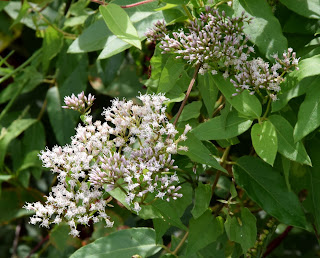The blue, purple and pink asters get all the attention in the fall. Tucked among the riot of yellow that is goldenrod (Solidago sp.), a group of yellow-flowered aster relatives wait to be discovered. They are the “goldenasters.”
In my area, there are 3 genera that share this common name: Chrysopsis, Pityopsis, and Heterotheca. Each genus has several species native to the state of Georgia, and these are the species of each that are found in my area (which is generally where the Piedmont ecoregion meets the Blue Ridge).
 |
| Maryland goldenaster (Chrysopsis mariana) |
Maryland aster is a more common name for the first goldenaster known as Chrysopsis mariana. It is a stout perennial that thrives in dry conditions such as roadsides and meadows. The shortest of the 3 profiled here, it has a tidy, clumping form and dark green foliage with attractive 1-inch flowers.
 |
| Silk-grass goldenaster (Pityopsis graminifolia) |
A slightly taller goldenaster is silk-grass (Pityopsis graminifolia) which is neither silk nor grass. Attractive silvery foliage is rather grass-like (graminifolia means leaves like grass) and looks good even without the flowers. In the fall, tall slender spikes topped with yellow flowers reach up to 2-3 feet tall. This plant also thrives in dry conditions and is reportedly aggressive in garden conditions with better soil and moisture.
 |
| Camphorweed goldenaster (Heterotheca camporum var. glandulissiumum) |
Camphorweed (Heterotheca camporum var. glandulissimum) is the tallest of these goldenasters, reaching 3-4 feet with a statuesque, erect form. I had not noticed this plant in my area before, but suddenly a large area of the roadside was covered with tall plants. The foliage of this species is a bit aromatic but not too unpleasant.
If you come across one of these lovely fall bloomers, now you know what they are. Goldenaster is a beautiful name for them as they light up their little corner of the world.














